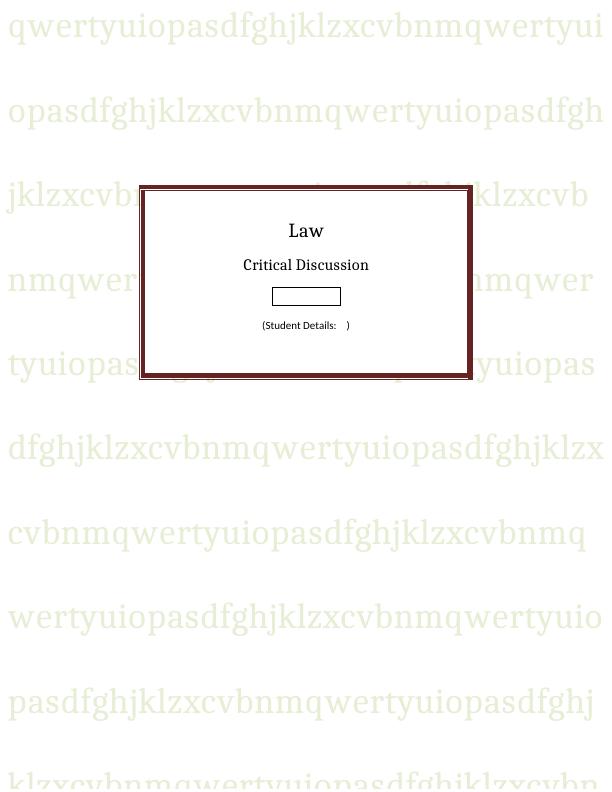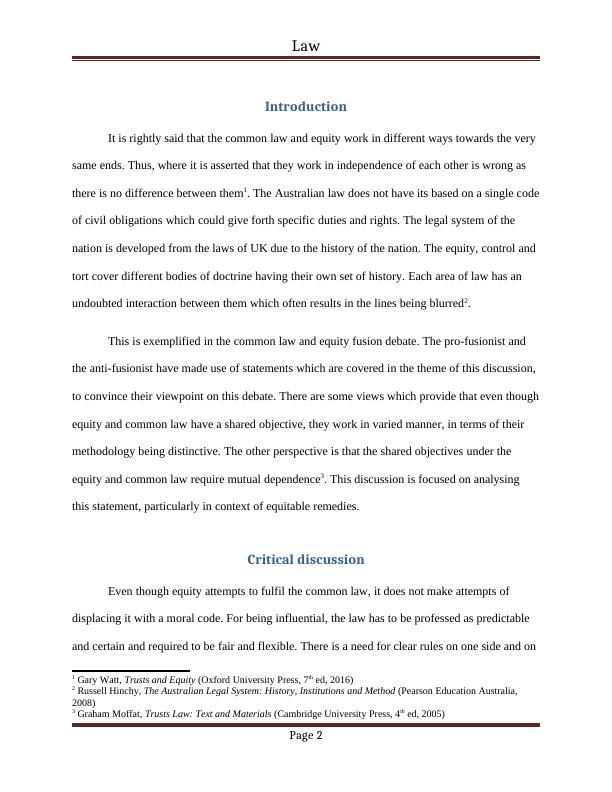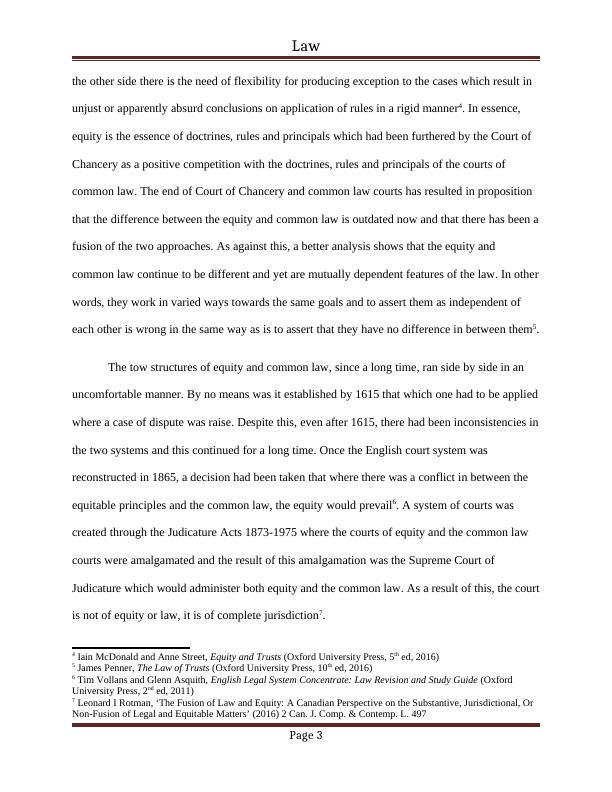The Australian Law - Assignment
9 Pages2239 Words55 Views
Added on 2021-04-21
The Australian Law - Assignment
Added on 2021-04-21
ShareRelated Documents
qwertyuiopasdfghjklzxcvbnmqwertyuiopasdfghjklzxcvbnmqwertyuiopasdfghjklzxcvbnmqwertyuiopasdfghjklzxcvbnmqwertyuiopasdfghjklzxcvbnmqwertyuiopasdfghjklzxcvbnmqwertyuiopasdfghjklzxcvbnmqwertyuiopasdfghjklzxcvbnmqwertyuiopasdfghjklzxcvbnmqwertyuiopasdfghjklzxcvbnmqwertyuiopasdfghjklzxcvbnmqwertyuiopasdfghjklzxcvbnmqwertyuiopasdfghjklzxcvbnLawCritical Discussion(Student Details: )

LawIntroductionIt is rightly said that the common law and equity work in different ways towards the very same ends. Thus, where it is asserted that they work in independence of each other is wrong as there is no difference between them1. The Australian law does not have its based on a single codeof civil obligations which could give forth specific duties and rights. The legal system of the nation is developed from the laws of UK due to the history of the nation. The equity, control and tort cover different bodies of doctrine having their own set of history. Each area of law has an undoubted interaction between them which often results in the lines being blurred2. This is exemplified in the common law and equity fusion debate. The pro-fusionist and the anti-fusionist have made use of statements which are covered in the theme of this discussion, to convince their viewpoint on this debate. There are some views which provide that even thoughequity and common law have a shared objective, they work in varied manner, in terms of their methodology being distinctive. The other perspective is that the shared objectives under the equity and common law require mutual dependence3. This discussion is focused on analysing this statement, particularly in context of equitable remedies. Critical discussionEven though equity attempts to fulfil the common law, it does not make attempts of displacing it with a moral code. For being influential, the law has to be professed as predictable and certain and required to be fair and flexible. There is a need for clear rules on one side and on 1 Gary Watt, Trusts and Equity (Oxford University Press, 7th ed, 2016)2 Russell Hinchy, The Australian Legal System: History, Institutions and Method (Pearson Education Australia, 2008)3 Graham Moffat, Trusts Law: Text and Materials (Cambridge University Press, 4th ed, 2005)Page 2

Lawthe other side there is the need of flexibility for producing exception to the cases which result in unjust or apparently absurd conclusions on application of rules in a rigid manner4. In essence, equity is the essence of doctrines, rules and principals which had been furthered by the Court of Chancery as a positive competition with the doctrines, rules and principals of the courts of common law. The end of Court of Chancery and common law courts has resulted in proposition that the difference between the equity and common law is outdated now and that there has been afusion of the two approaches. As against this, a better analysis shows that the equity and common law continue to be different and yet are mutually dependent features of the law. In otherwords, they work in varied ways towards the same goals and to assert them as independent of each other is wrong in the same way as is to assert that they have no difference in between them5.The tow structures of equity and common law, since a long time, ran side by side in an uncomfortable manner. By no means was it established by 1615 that which one had to be appliedwhere a case of dispute was raise. Despite this, even after 1615, there had been inconsistencies inthe two systems and this continued for a long time. Once the English court system was reconstructed in 1865, a decision had been taken that where there was a conflict in between the equitable principles and the common law, the equity would prevail6. A system of courts was created through the Judicature Acts 1873-1975 where the courts of equity and the common law courts were amalgamated and the result of this amalgamation was the Supreme Court of Judicature which would administer both equity and the common law. As a result of this, the courtis not of equity or law, it is of complete jurisdiction7. 4 Iain McDonald and Anne Street, Equity and Trusts (Oxford University Press, 5th ed, 2016)5 James Penner, The Law of Trusts (Oxford University Press, 10th ed, 2016)6 Tim Vollans and Glenn Asquith, English Legal System Concentrate: Law Revision and Study Guide (Oxford University Press, 2nd ed, 2011)7Leonard I Rotman, ‘The Fusion of Law and Equity: A Canadian Perspective on the Substantive, Jurisdictional, Or Non-Fusion of Legal and Equitable Matters’ (2016) 2 Can. J. Comp. & Contemp. L. 497Page 3

End of preview
Want to access all the pages? Upload your documents or become a member.
Related Documents
Equity and Lawlg...
|13
|4372
|99
Equity and Lawlg...
|11
|3060
|48
Business laws - Sample Assignmentlg...
|14
|3008
|35
